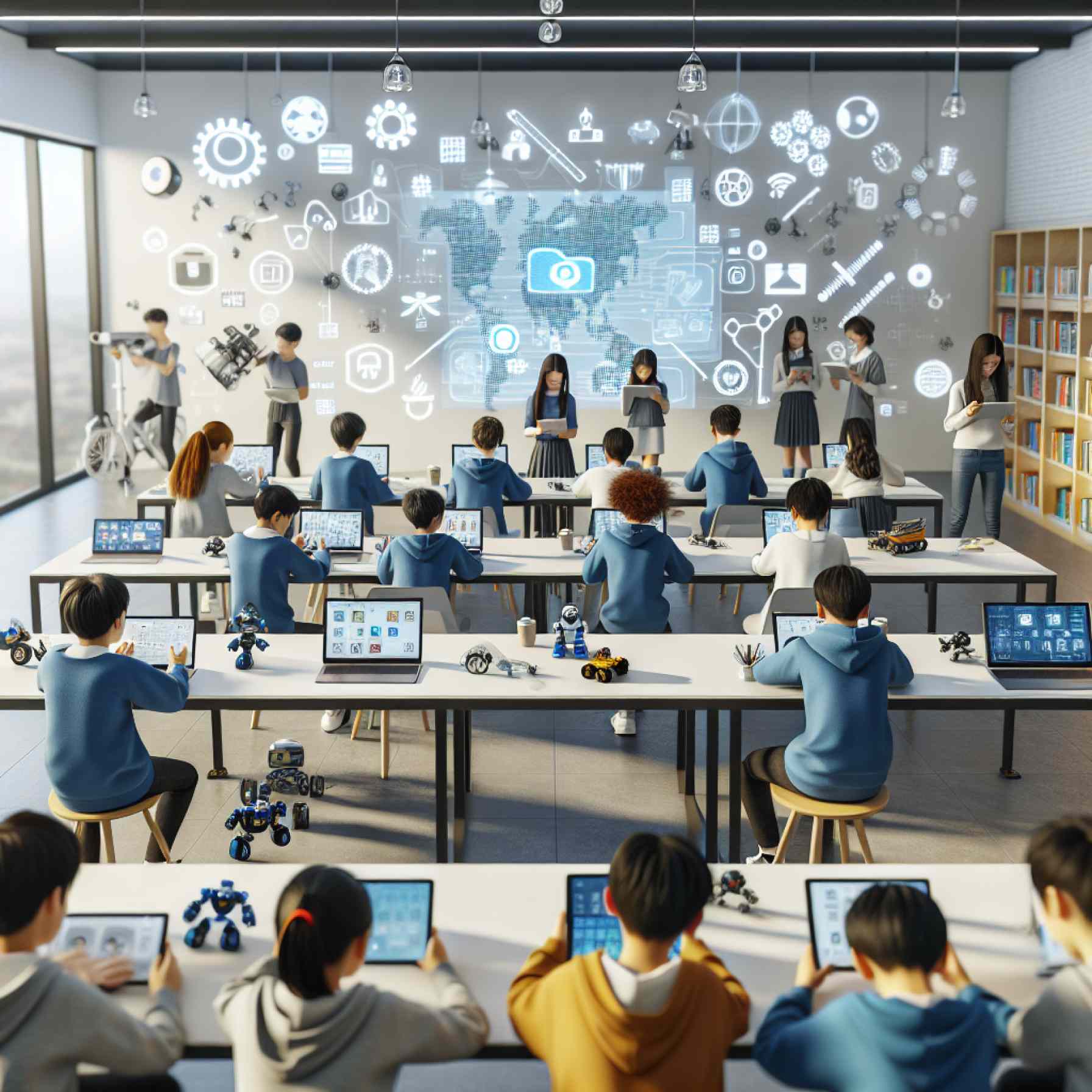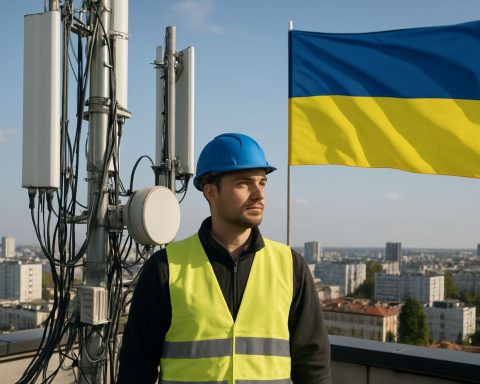- A high school in Fuzhou, China, is revolutionizing education by implementing a cutting-edge smart school system.
- The system, powered by the DeepSeek R1 AI model, uses data-driven insights to personalize learning experiences, enhancing both teaching and student engagement.
- Innovative features include a smart library with automated book borrowing and returning stations, promoting independent learning among students.
- Developed in-house, the system creates a comprehensive educational environment, integrating security data and specialized sub-systems for student and teacher welfare.
- The initiative highlights the potential of technology to transform educational landscapes, offering a model for institutions worldwide.
Amid the bustling cityscape of Fuzhou in China’s Fujian Province, a remarkable transformation is unfolding within the walls of a local high school. This educational institution has embraced cutting-edge technology to introduce a revolutionary smart school system, propelling students and teachers alike into a new era of learning and teaching.
Imagine a classroom where data-driven insights dictate the flow of lessons and digital libraries respond to students’ needs, all seamlessly orchestrated by a powerful AI system. This is not a glimpse into the distant future but a present reality at this pioneering Fuzhou high school, where education intertwines with innovation.
At the heart of this transformation lies the DeepSeek R1, a large-scale artificial intelligence model crafted to revolutionize educational environments. This sophisticated system goes beyond rudimentary analytics, diving deep into classroom dynamics to shape tailored learning strategies that cater to each student’s unique needs. It doesn’t merely analyze, it enlightens, providing insights that empower educators to elevate their teaching methodologies.
The vice director of academic affairs, Lin Ronghui, reveals that the smart school system was meticulously developed in-house. It is a comprehensive network encompassing security data, a knowledge repository, and various sub-systems dedicated to the welfare of students and teachers. This confluence of technology underpins the school’s ambition to nurture analytical minds and foster a secure, efficient educational ecosystem.
A stroll through the school’s smart library unveils a scene that could be right out of a science fiction novel. Students interact with automated book borrowing and returning stations, effectively reducing the dependency on human librarians and allowing seamless access to knowledge at their fingertips. This innovation empowers students to manage their learning resources independently, fostering a sense of responsibility and curiosity.
While technology steers this educational advancement, it is the school’s unwavering commitment to enhancing student engagement and academic performance that fuels its journey towards excellence. The integration of AI not only optimizes resource usage but also crafts a personalized educational experience that aims to unlock each student’s potential.
This bold initiative in Fuzhou exemplifies a powerful truth: when technology and education unite, the possibilities are limitless. As educational landscapes around the world grapple with evolving demands, this school stands as a beacon of innovation, inspiring institutions globally to rethink and reshape the future of learning.
In the ever-evolving world of education, embracing such transformative technologies promises not only to enrich learning experiences but also to equip future generations with the skills and adaptability necessary to navigate an increasingly complex world.
Revolutionizing Education: How Fuzhou’s Smart School is Paving the Way for Future Learning
Introduction: A Glimpse into the Future of Education
In the bustling cityscape of Fuzhou, China, a high school is pioneering an extraordinary educational transformation. With the integration of cutting-edge technology, this institution illustrates the future of smart schooling. Let’s delve into this innovative project and explore the potential benefits and challenges it presents to global education.
Features and Benefits of the Smart School System
1. DeepSee R1 AI Model:
– At the core of the transformation is the DeepSee R1, an advanced AI model that offers deep insights into classroom dynamics. Its ability to analyze and adapt teaching strategies based on individual student needs results in a truly personalized educational experience.
– By implementing tailored learning plans, the AI helps teachers focus on effective teaching methodologies that cater to diverse learning styles, ultimately boosting academic performance.
2. Autonomous Learning Environment:
– The smart system facilitates an autonomous learning environment where students can access a digital library featuring automated book borrowing and return stations. This reduces reliance on human librarians and fosters student independence.
– By encouraging resource management, students develop responsibility and curiosity in their approach to learning.
3. Comprehensive Security and Resource Management:
– The school’s system is designed with built-in security features and resource management capabilities, ensuring efficient operation and safeguarding everyone in the school community.
– These systems aim to create a safe and efficient educational ecosystem that nurtures analytical and critical thinking skills.
Life Hacks and How-To Steps for Implementing Smart Technology in Schools
1. Conduct a Needs Assessment:
– Evaluate the specific needs of your educational institution, considering factors like student demographics, available resources, and areas for improvement.
2. Select the Right Technology:
– Choose an AI model that can analyze individual student performance and adapt accordingly, similar to the DeepSee R1.
– Ensure the chosen technologies integrate seamlessly with existing school systems.
3. Train Teachers and Staff:
– Provide comprehensive training sessions to help teachers and staff effectively utilize and adapt to new technologies.
– Foster an environment of continuous learning and adaptation.
4. Monitor and Review:
– Regularly assess the impact of smart technology on student performance and teacher efficiency.
– Make necessary adjustments to optimize outcomes.
Market Forecasts and Industry Trends
– According to experts, the global market for AI in education is expected to grow rapidly. AI-driven educational tools can revolutionize learning by offering personalized education and reducing disparities.
– As more schools explore the potential of AI, the trend towards smart schooling will likely continue to expand, guiding educational policy and investments worldwide.
Challenges and Controversies
– Privacy Concerns: The use of data in AI systems raises questions about student privacy and data security. Schools must ensure robust safeguards are in place.
– Equity in Access: While technology can enhance learning, schools must address disparities in access to these advanced tools to ensure all students benefit equally.
Conclusion: Actionable Recommendations
Embracing innovative technology in education can greatly enhance learning outcomes. To maximize the benefits:
– Educators should prioritize regular training and development programs.
– Institutions must integrate technology thoughtfully, ensuring it complements the traditional learning experience.
– Policymakers should support equitable access to technology for all students.
By fostering an adaptable and tech-savvy educational ecosystem, schools can prepare students for the complexities of the modern world. For more insights into integrating technology in education, visit Edutopia and explore their resources.
With Fuzhou’s smart school leading the way, the potential for revolutionizing education on a global scale is both exciting and promising.







